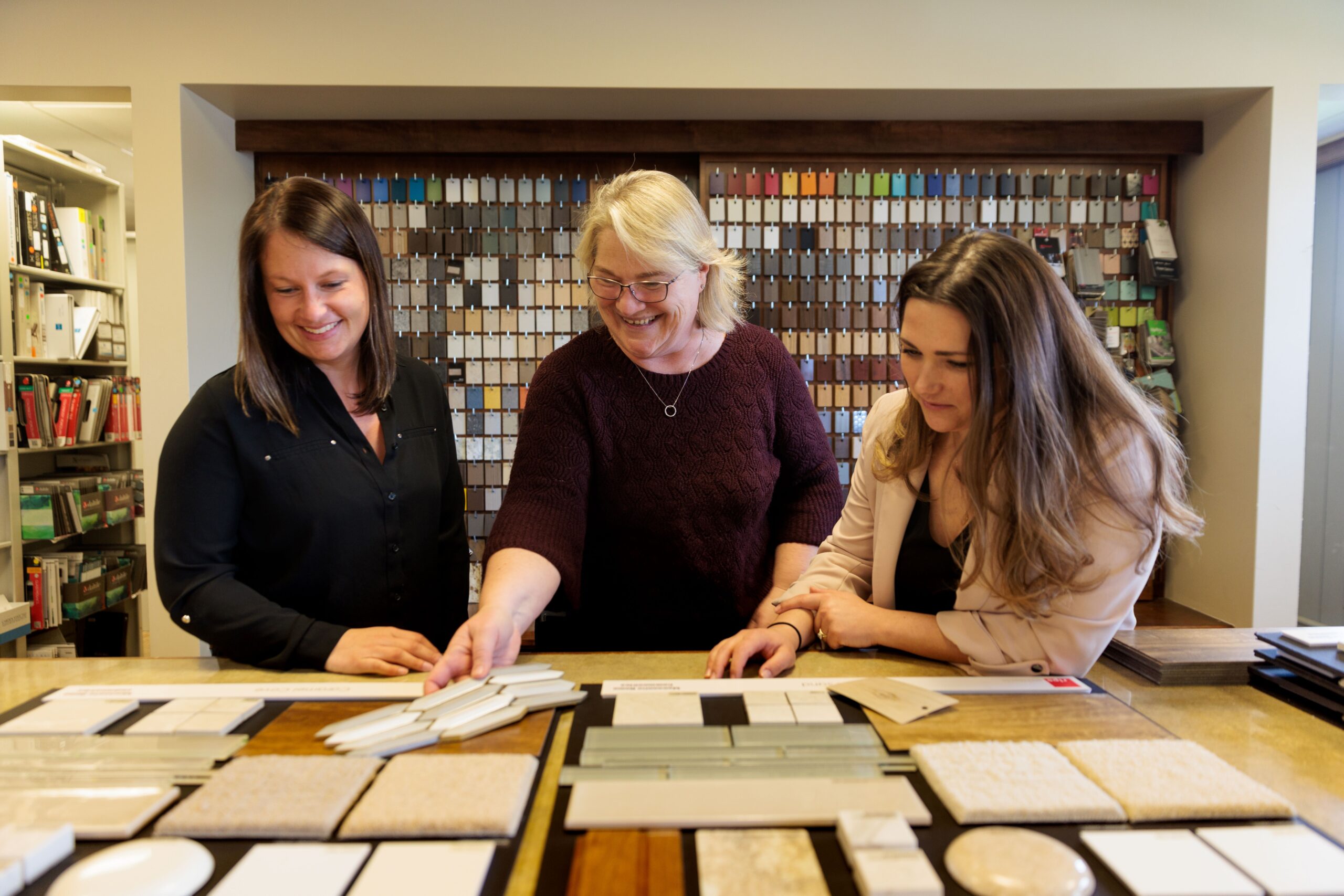Interior Design: Understanding the profession and the value of NCIDQ Certification
March 2, 2023
RLPS recently celebrated an interiors team member passing the National Certification for Interior Design Qualification (NCIDQ) exam and earning his professional competency and expertise in the trade. If you’re unfamiliar with the industry, you might not understand the importance of this milestone.
Stacy Hollinger Main, RLPS partner, shares that
“anyone who studies Interior Design should value his/her education enough to take the next step in the process which is [NCIDQ] examination. At RLPS, one of our missions is to help mentor young people in both architecture and interior design to take the leap into being a professional. This is one of the key goals of our practice – to cultivate personal development. Interior Design is a young profession, so it is imperative that we also educate the public to the level of standards that NCIDQ Certificate holders possess.”

While some professions are centuries old, the term “interior decorator” was first used in the United States in the early 1900s. It was not until the 1980s that the first legislation was passed about interior design. Certifications like the NCIDQ help provide structure and accountability for the interior design profession. But what exactly is the NCIDQ Certification and why is it valuable to professionals and project owners?
What is the NCIDQ Certification?
According to the Council for Interior Design Qualifications (CIDQ) website, the “NCIDQ Certification is the industry’s recognized indicator of proficiency in interior design principles and a designer’s commitment to the profession.” An interior designer who holds this certificate has passed a series of rigorous, objective exams to prove his/her expertise in understanding and applying codes created to protect public health, safety and welfare.
RLPS interior designer, Matthew Funk Barley, recently passed his NCIDQ exam. He shares that the content covered on the exam is everyday knowledge such as understanding contracts, codes and construction documents. At RLPS, 92% of our interior design staff either holds the NCIDQ Certification or is currently undertaking the examination process.

Does the NCIDQ exam meet legal standards?
The NCIDQ Certification adheres to legal and regulatory standards for the interior design profession as established by more than half of the states across the United States. The CIDQ website provides a visualization of different types of regulations adopted by each North American jurisdiction.
What is the role of an NCIDQ interior designer?
The role of an NCIDQ Certified interior designer is multi-faceted and spans a project’s timeline. The CIDQ website states that “interior designers contribute to the interior environment with knowledge and skills about space planning; interior building materials and finishes; casework, furniture, furnishings, and equipment; lighting; acoustics; wayfinding; ergonomics and anthropometrics; and human environmental behavior.” Anthropometrics is the science of understanding the human body as it relates to the design of furniture.
NCIDQ Certified interior designers provide direction for surface level changes to an interior environment. They also analyze, plan, design, document and manage interior non-structural construction and renovation projects. The graphic on the right, from the International Interior Design Association (IIDA) website, provides a visual representation of the role of an NCIDQ Certified interior designer compared to an architect.
Jessie Shappell, a senior interior designer at RLPS, is an ongoing volunteer and former board member of the CIDQ. in 2018 she participated in an advocacy roundtable about interior design. She shares that “the professional responsibilities of NCIDQ Certified interior designers parallel those of registered architects” and will help shape a project from start to finish.
What is the value of hiring an NCIDQ Certified interior designer?
An NCIDQ Certified interior designer is an integral member of a project team. As Jessie Shappell puts it, “When an interior designer is involved from project conception to completion, clients benefit from a holistically designed and coordinated interior that greatly benefits the owner and all building occupants.”

When considering hiring an interior designer, look for a qualified professional with the NCIDQ Certification. The value of hiring an NCIDQ Certified interior designer means the owner can trust that the professional will adhere to industry and legal standards. It also means that he/she has the knowledge and skills necessary to create a welcoming, safe and beautiful environment.
The NCIDQ Certification is a valuable accreditation for interior design professionals.
“While the examination process is difficult and involves emotional highs and lows,” says Matthew Funk Barley, “the sense of accomplishment that comes with the completed process is worth it.”
Interested in learning more about the interior design profession? Check out these videos from the CIDQ and this joint report from the CIDQ and the National Council of Architectural Registration Boards.
Interested in learning more about the history of interior design? Check out our blog highlighting pioneers of the industry.
Resources: https://www.idlny.org/history-of-interior-design
Stacy Hollinger Main, IIDA, Partner, leads the RLPS Interiors team. A graduate of the University of Delaware, Stacy has 28 years of commercial design experience. Stacy appreciates any opportunities to apply her interior design background to help our clients and friends create joyful environments!
Blog Editor, Erin Harclerode